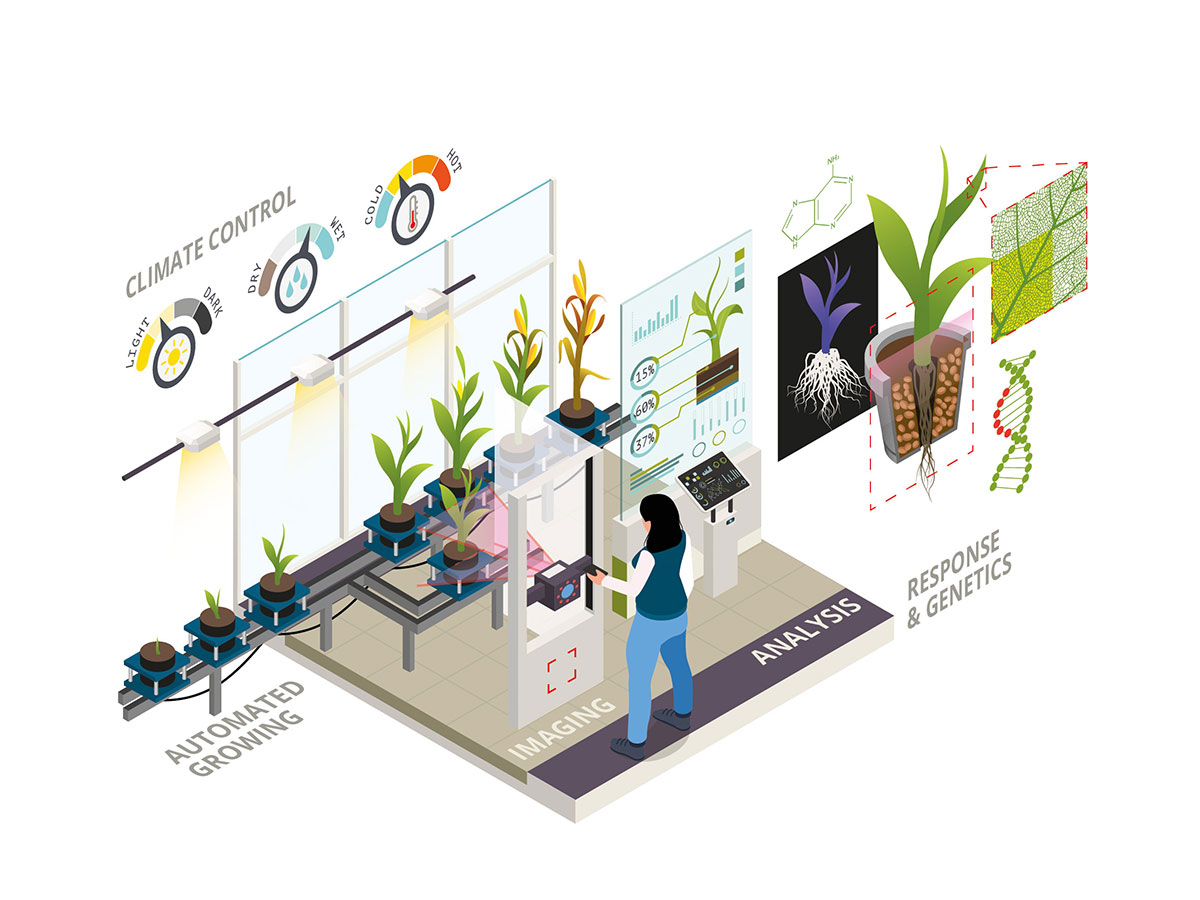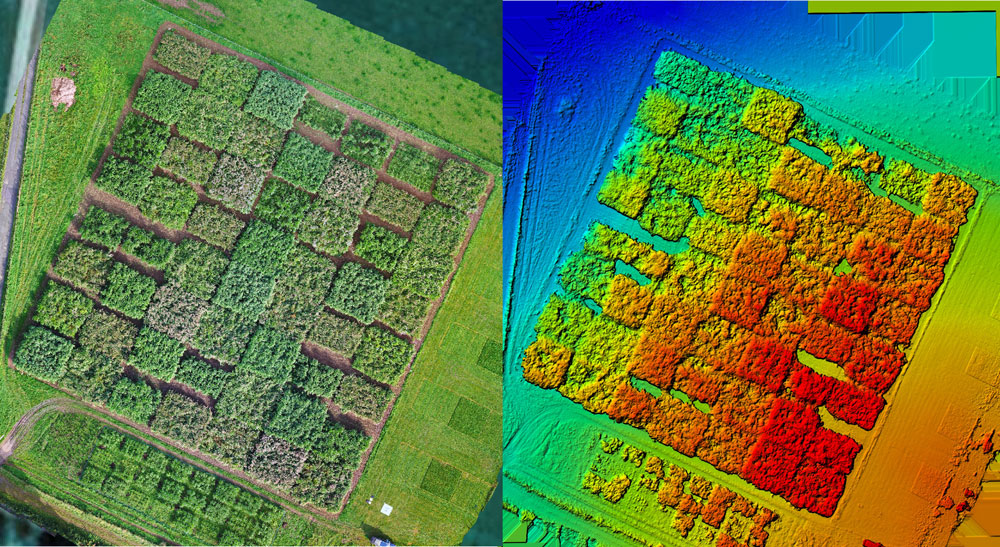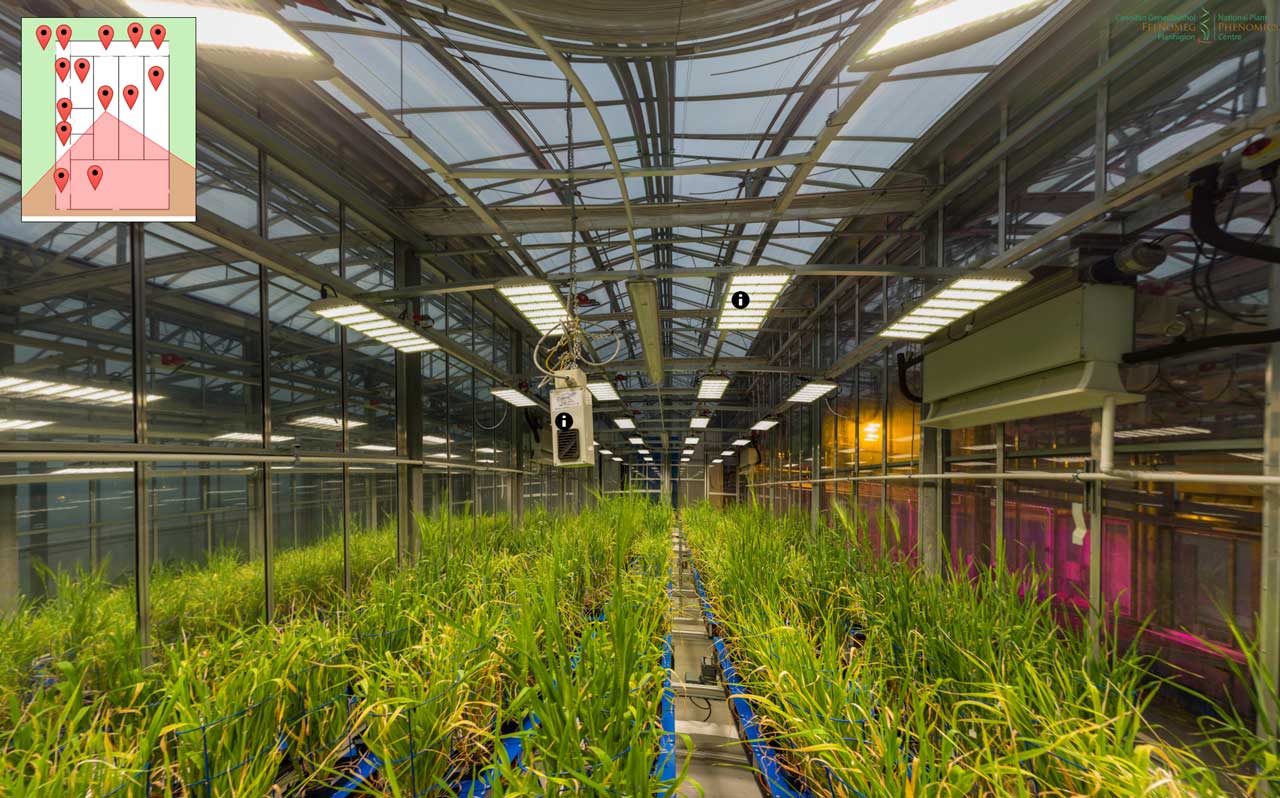National Plant Phenomics Centre
The National Plant Phenomics Centre is a state-of-the-art facility that brings together biologists, engineers, computer scientists, and mathematicians to investigate how genes and the environment interact and give rise to characteristics (or phenotypes) of different plants.
Our controlled environment glasshouses, high-throughput automated growing facilities and field monitoring drones, coupled with multispectral imaging, robotics, and machine learning (a branch of artificial intelligence) allow IBERS researchers to apply 21st century technology onto a hundred years of experience of grassland science and plant breeding.
“Looking at plants with a new set of eyes.”

For much of human history many of the traits used in plant breeding have been selected by eye. Digital imaging technologies now enable plant breeders to observe plants with a hundred different eyes. For example, eyes that can see in multiple spectrums, give a birds-eye view over fields, see through plant tissues and even through the soil to observe how root structures grow.
Use of the latest imaging technology coupled with machine learning, enables IBERS researchers to capture a vast array of imaging data from large numbers of plants in a short space of time. Such technologies facilitate work to be done in months that would previously have taken many years using traditional plant breeding approaches.
Developmental stages during the life of a plant can be captured, in three dimensions, and changes modelled over time. This allows a whole new range of traits to be measured that have previously been inaccessible to plant scientists and breeders. The phenomics centre therefore carries out research that furthers our fundamental knowledge of plant science, speeds up crop breeding and builds datasets that can be applied to multiple crops and used to develop new machine learning systems and AI applications to further accelerate progress.

360º Virtual Walkthrough
Explore our facilities yourself with our 360º Virtual Walkthrough. Click the image below to get started.
NPPC Capabilities
The NPPC allows populations of crops, and other plants, to be assessed by non-invasive visual, infra-red, NIR, fluorescence and laser scan-imaging sensors to record shoot growth and development, water content, photosynthetic activity, temperature and root development (using transparent soil columns). More detailed measurements of photo-physiology can be made on up to 2,000 plants on our small plant platform. NPPC lead (Doonan) has established the capability as a core member of international consortia (e.g., EPPN, EMPHASIS), to deliver phenotyping of crop and model plants. Extensive glasshouse and controlled environment facilities are also available including the Venlo (26 compartments offering control of temperature and day length), and 10 Sanyo and Saxil cabinets/rooms which provide control of day length, temperature and humidity. IBERS crop experiments are also carried out in a custom Soil-Plant-Atmosphere Facility (instrumented rain-out/ lysimeter), which acts as a half-way house between the field and glasshouse. Controlled Environment Agriculture will likely feature in future food supply chains, and new vertical farming research facilities are part of the AberInnovation Campus, to link research with industry needs, and builds on the Plants & Architecture project.
Significant recent investment in imaging equipment through HEFCW has allowed an upgrade to confocal and electron microscopy facilities, and enhanced FTIR capability for high throughput metabolomic phenotyping. The IBERS genetic transformation laboratories and glasshouse facilities enable the manipulation of model and crop plants (e.g., Brachypodium, Lolium, Festuca, Zea and Miscanthus), including through genome editing (CRISPR/Cas), and are used for the modification of traits such as cell walls, self-incompatibility and recombination. The Analytical Chemistry unit at IBERS holds ISO 17025 accreditation in 19 industry standard techniques of forage and nutrient analyses and processes internal and external samples. The DNA sequencing laboratory represents a local capability for smaller projects especially where a faster turnaround is needed using Illumina MiSeq for SNP, metagenomics and amplicon sequencing. The metabolomics facility at IBERS include high resolution mass spectrometry and chromatography techniques (GC-MS-MS, GC-tof-MS, LC-MS) for untargeted metabolomics, chemical and structural analysis, proteomics and cell profiling.
➡ Find out more about Phenomics at IBERS.

